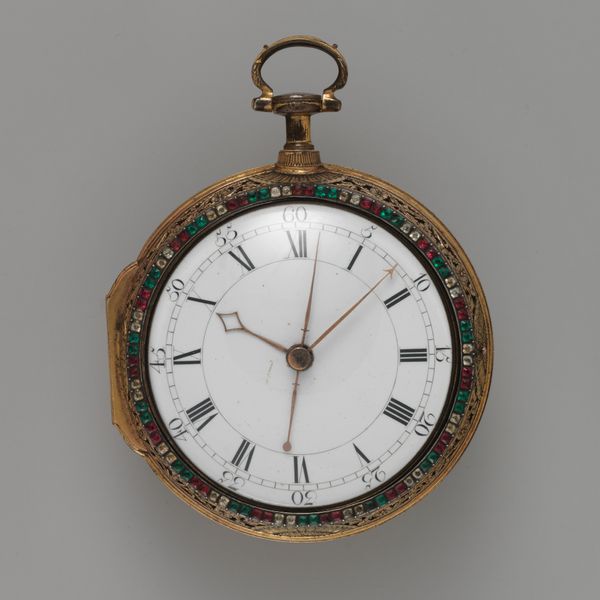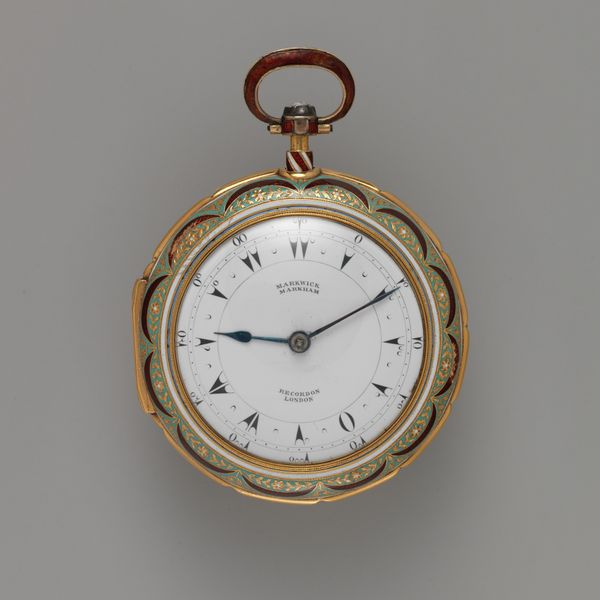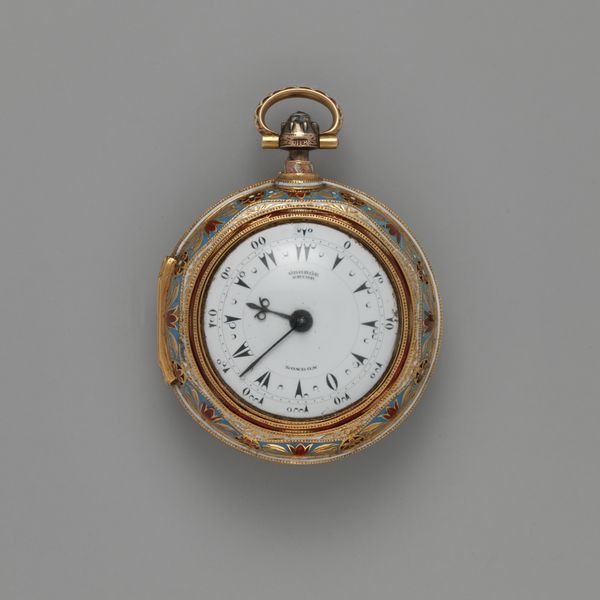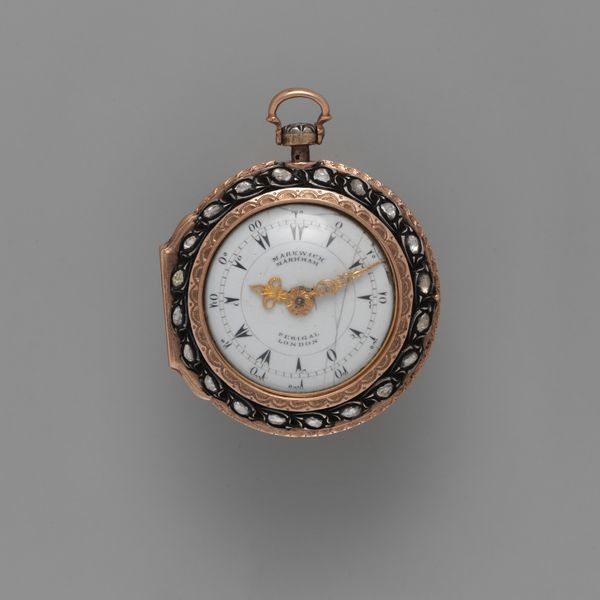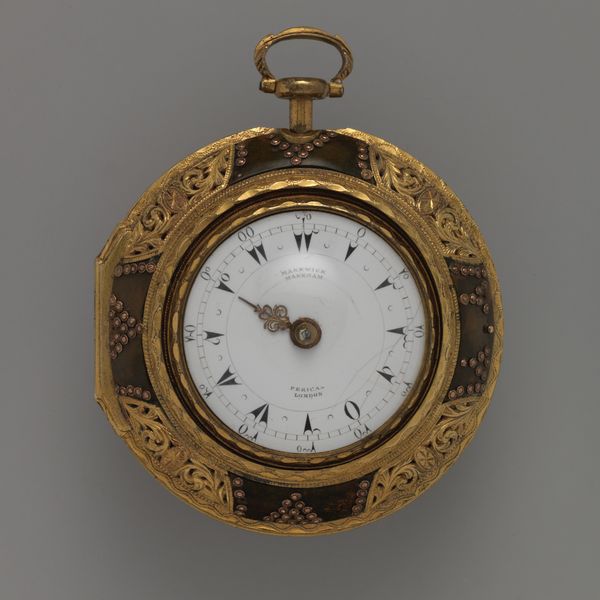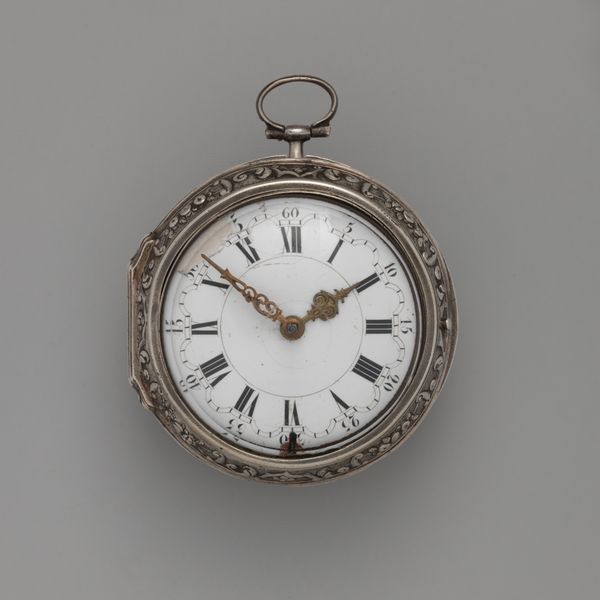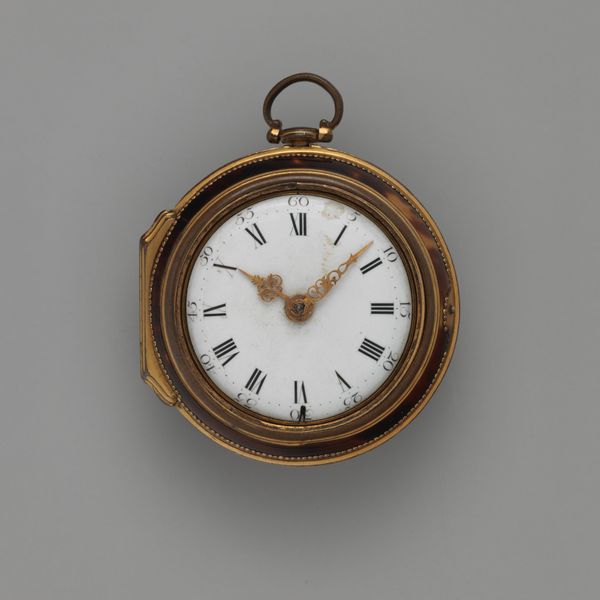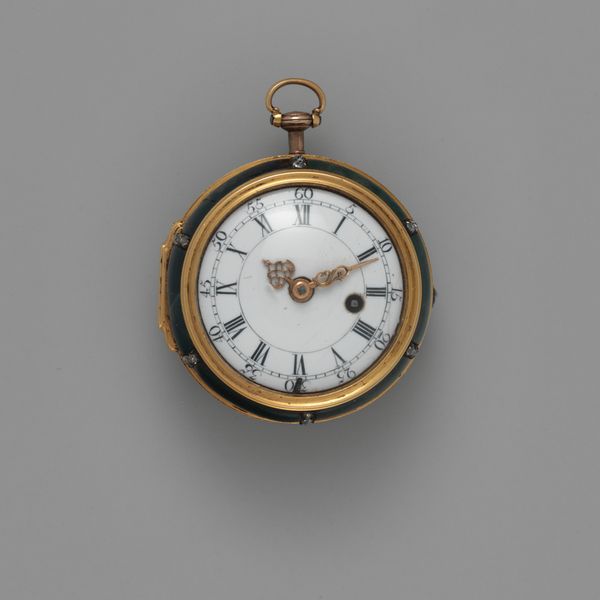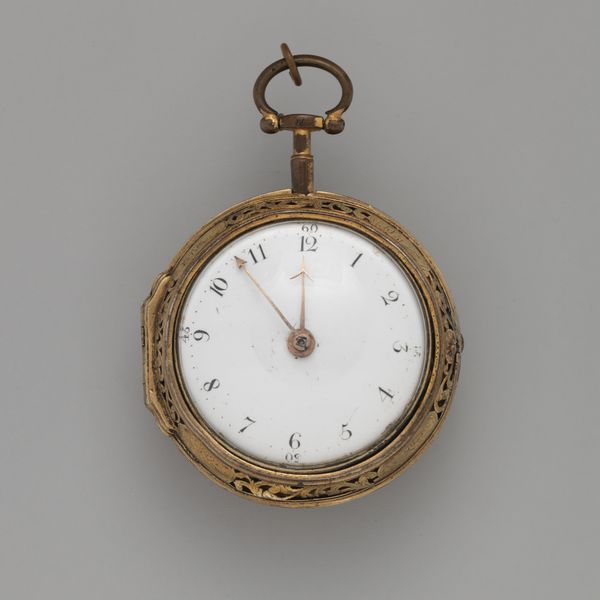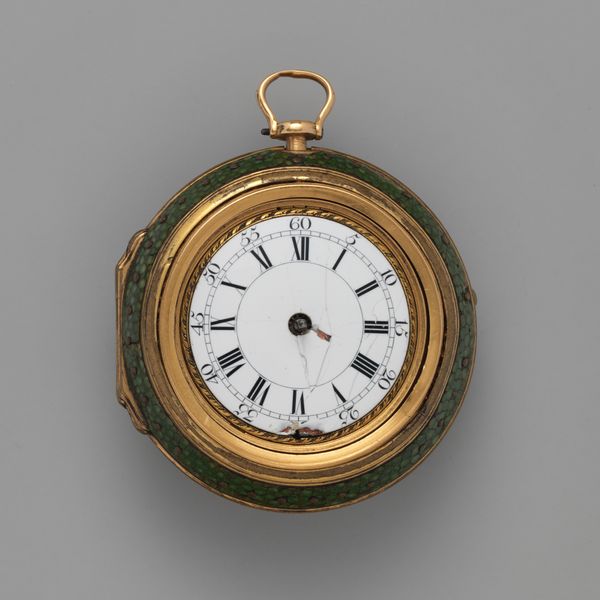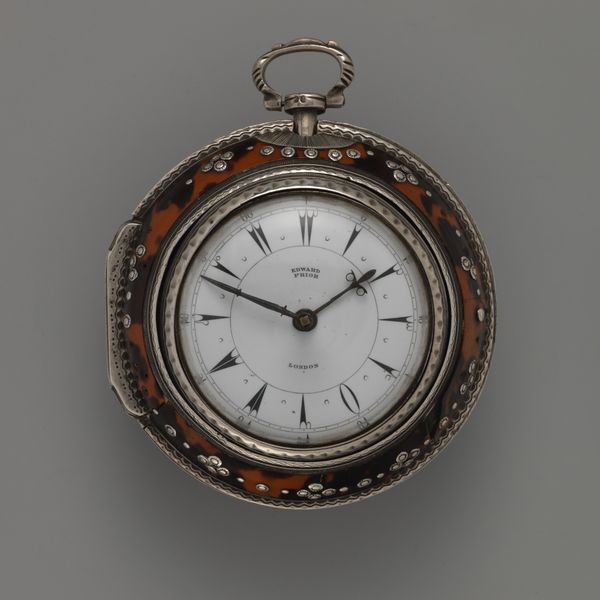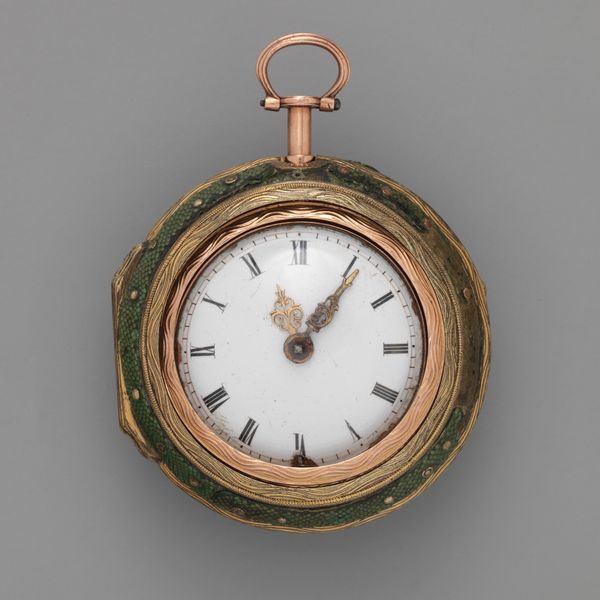
silver, metal, gold, sculpture
#
silver
#
metal
#
gold
#
jewelry design
#
sculpture
#
decorative-art
Dimensions: Diameter: 1 3/4 in. (4.4 cm)
Copyright: Public Domain
Curator: Goodness, it's giving me antique dollhouse vibes, like a prop from a miniature period drama. All that concentrated detail just begs you to lean in close, doesn't it? Editor: It does. This Repeating watch dates back to somewhere between 1775 and 1785. It can be found at the Metropolitan Museum of Art. Crafted from gold, silver, and other metals, this object exemplifies the decorative arts of the late 18th century. Curator: "Repeating," you say? Is that like it chimes the hour over and over until someone throws it out a window? Because I confess that’s tempting. But I do find myself wondering who was the original owner—perhaps a Countess who'd always keep this gilded, jeweled time-keeper about her person. Editor: Or, perhaps more accurately, how that kind of ostentatious display intersects with broader sociopolitical currents of the time. The late 18th century was marked by huge disparities in wealth and power, which also involved various forms of gendered exclusion. This object wasn't made for just anyone, was it? Curator: Fair point, it's like a wearable symbol of exclusivity. Though I bet you a silk stocking that even then some poor clockmaker cursed every sparkly little stone he had to set. Craft doesn’t come cheap, in any sense, then or now. I picture the artistry, the time involved…it's kind of meditative, the act of creation. Editor: Certainly, and its beauty is undeniable. Yet, its historical moment matters: understanding how these objects played into and perhaps even solidified social stratifications is part of a broader, more critical appreciation. It reminds me of the debates we see today regarding ethical consumption and the politics of luxury. Who is afforded this and who is not? Curator: I agree. You are bringing a necessary consideration in the matter. It also underscores the paradox inherent in beautiful objects—they reflect brilliance and inequality simultaneously. A tiny, ticking microcosm of human endeavor, sparkling and a bit... melancholy. Editor: Melancholy is definitely part of its aura, isn’t it? The Repeating watch exists as more than pretty thing; it represents layers of history and labor that often go unseen and unheard, demanding our attention and critical awareness, as well as our appreciation of its fine details. Curator: Consider me chastised—but, happily so. Next time I see something shiny, I’ll endeavor to dig a bit deeper. Thanks for expanding my thinking today! Editor: Anytime. It’s important that objects such as this become avenues for learning and engaging with the complexities of power dynamics.
Comments
No comments
Be the first to comment and join the conversation on the ultimate creative platform.
